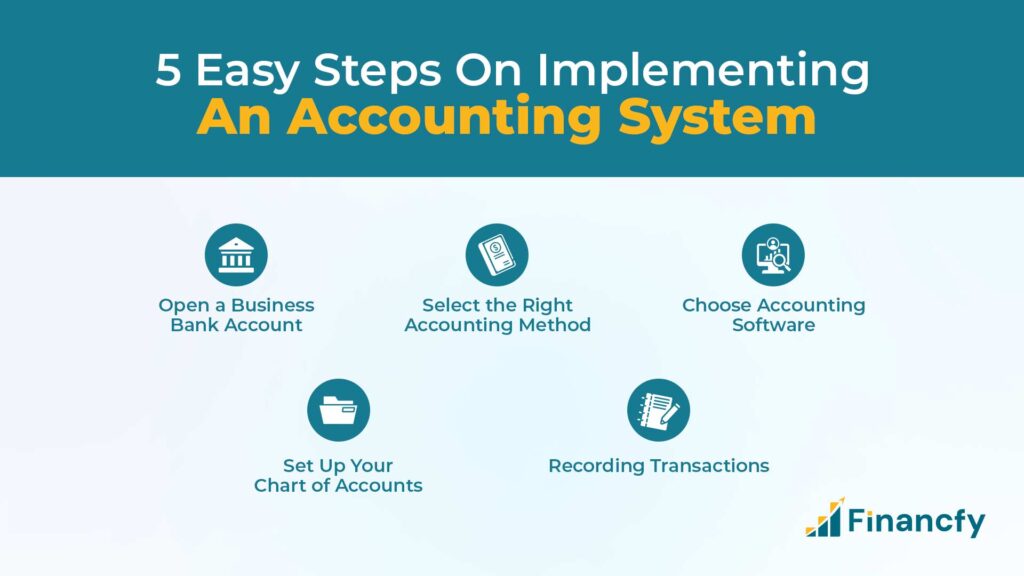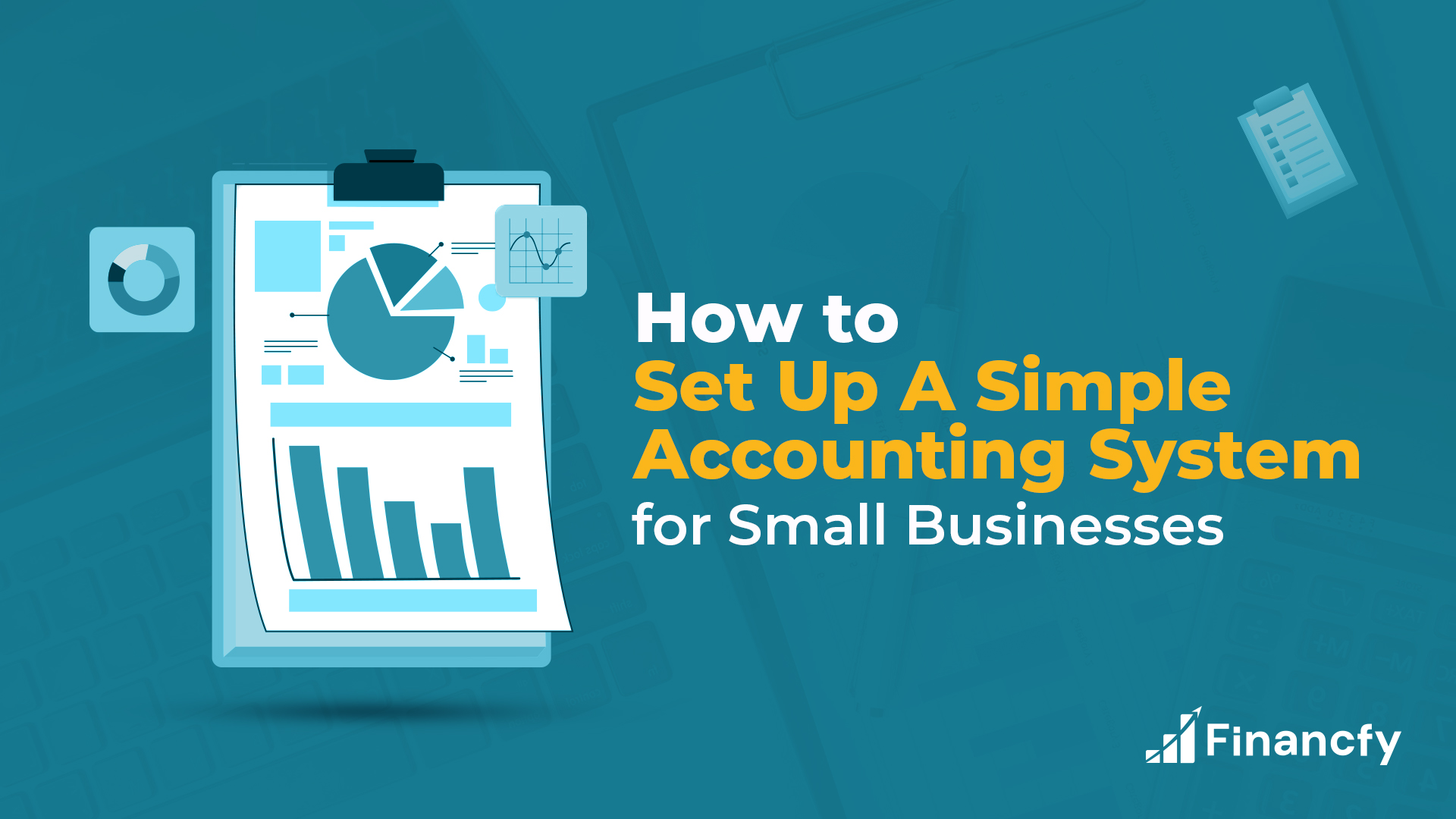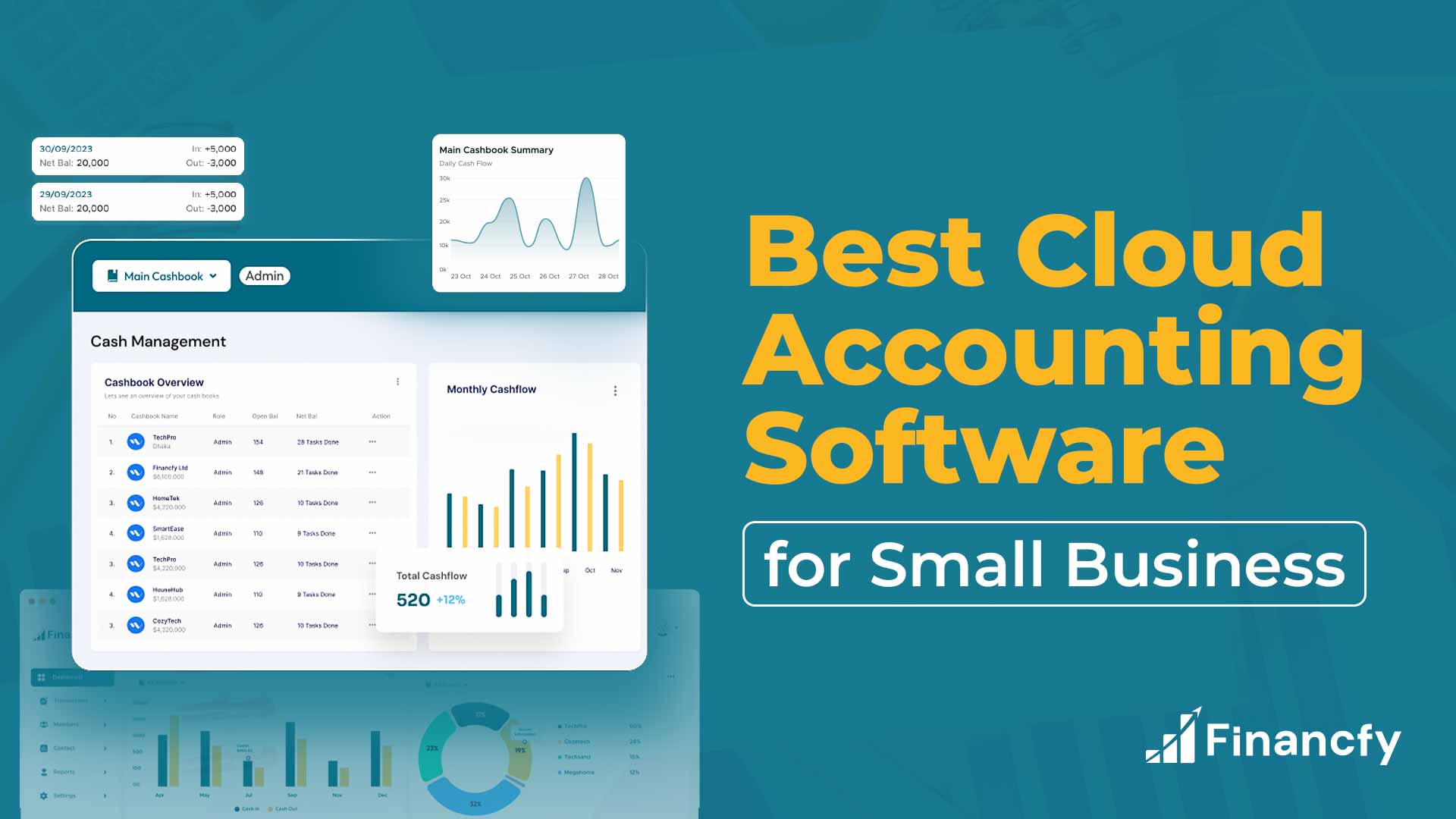An accounting system is a crucial part of a successful business. It’s not just about keeping financial information. It’s about gaining insights into the financial health of a business.
Accounting system provides financial reports that give a clearer understanding of the financial performance of a business. This knowledge is necessary to make informed financial decisions and business growth. Every business must have a solid accounting system to keep accurate financial records.
So, how do you set up a simple accounting system? Setting up an accounting system is much easier.
In this article, we will discuss the step by step process of setting up an accounting system for any size of business.
Key Takeaways
- Accounting is a system for managing the financial information of a business.
- Without an accounting system a business can never run properly or monitor its financial growth.
- Accounting system is based on some basic principles.
- Setting up a new accounting system is not a complex task. Following some simple steps is all it takes to complete.
What is Accounting and Why It is Important?
Accounting is simply the language of business. It is a system for recording, analyzing, summarizing, and reporting financial transactions of a business. The core purpose of accounting is to provide meaningful insights into the financial health of the business.
Every business must keep accurate records of income, expenses, assets, and liabilities for proper financial management. That’s where accounting works as a vital tool. It provides meaningful and organized financial reports of a business.
Accounting helps business owners, managers, investors, and other stakeholders to evaluate the performance of the business, and make informed financial decisions. Without the accounting system, businesses would operate in the dark. And make decisions based on hunch rather than hard data.
It’s essential to learn some basic principles of accounting to understand it. Here are the 5 basic accounting principles:
- The Principle of Consistency: Consistency principles means using the same accounting methods consistently from one period to the next. If you continuously jump on different accounting methods, the ultimate financial result will be very hard to understand.
- The Principle of Matching: The matching principle says that costs incurred to generate revenue should be recorded in the same accounting period as the revenue. The inventory will be charged to the cost of goods sold at the same time of recording revenue from the sale of that inventory.
- The Principle of Cost: The cost principle says that the assets, liabilities & equity investments should be recorded at their original purchase costs. But in the near future this principle may change into recording the fair value of the assets & liabilities.
- The Principle of Objectivity: This principle says that transactions should be recorded based on objective evidence. Personal opinions or biases are not acceptable here. Financial information should be verifiable and free from subjective interpretation.
- The Principle of Full Disclosure: This principle states that financial statements must disclose and include all the relevant and material information about the business’s financial position, performance, and cash flows. This promotes the importance of transparency in financial reporting.
5 Easy Steps On Implementing a New Accounting System
Setting up a new accounting system is not a big deal if you know the steps. Just follow these simple steps and you will have a clear roadmap to set up the new accounting system for your business.

What you can do first is open a separate bank account for your business. Even if some businesses do not require this, the IRS suggests having a separate business bank account. It’s easier to differentiate personal and business transactions in this way.
Why Open a Business Bank Account?
- Separation of Personal and Business Finances
- Professionalism and Credibility
- Legal and Regulatory Compliance
- Access to Banking Services
- Identify business tax deductions and streamline tax preparations.
Before opening a bank account it is necessary to evaluate some points of the bank. Because the bank account will be connected with the business’s accounting system. So, the integration should be smooth.
Things to consider while choosing a bank account:
- Research the bank’s reputation and stability
- Consider the account fees and minimum balance requirements.
- Availability of account features such as online banking, mobile banking, bill pay, and overdraft protection.
- Choose a bank with convenient branch locations and ATM networks.
- Compare interest rates.
- Evaluate the quality of customer service.
- Ensure account security measures.
- Additional Services such as business loans, merchant services, and financial planning.
- Flexibility in account management and customization.
The first thing to do is, choosing which accounting method should be used for the system. There are mainly two accounting methods available. Cash-basis method and Accrual-basis method. Here is a little description on the two methods:
# Cash-basis method: Cash basis accounting is a very simple method in the accounting system. Generally, very small businesses with sole proprietors use this method for their financial management. Here, a transaction is recorded only when it is paid or received in cash.
# Accrual-basis method: In the accrual accounting method, revenues and expenses are recorded when they are earned or incurred, not when the cash is paid or received. This method is preferred by all and required by GAAP. It is best suited for businesses of all sizes.
Most tax authorities might require you to use the accrual accounting method.
For example, In the US, businesses with sales over $5 million per year must use an accrual method. Also, the accrual accounting method provides a more accurate picture of financial position.
The cash basis method is generally easier to maintain. But it’s not complete and also not best for long term transaction recording.
Accrual method is suitable for any businesses with complex financial transactions. So, choose the required accounting method wisely.
Mainly Four types of accounting systems are available. The first one is manual and has to do with pen & paper. The rest three are software-based. There are plenty of accounting software can be found nowadays. So, choosing the right accounting software for the accounting system is necessary.
Generally, two types of accounting software can be found. Cloud-based & Desktop software. Cloud-based accounting software allows access from anywhere around the world through the internet. And desktop software is downloaded in a single computer or any device. It works only on the device where it is downloaded and set up.
Now, there are some considerations to take before choosing an accounting system software. Make sure your accounting software comes with these features:
Criteria for Selecting Accounting Software
Ease of Use: Select an easy-to-use accounting software with a clean and organized interface, as it enhances efficiency by simplifying accounting tasks. The software should have minimal training options for you and your team to run quickly.
Flexibility: The software should be flexible enough to keep pace with the changing needs of your business. As the business grows, some changes and upgrades will be needed to the software.
Features and Functionality: Evaluate the features & functions offered by the accounting software. Determine if they meet your business requirements. The key features to look for in an accounting software are invoicing, expense tracking, bank reconciliation, reporting, and integration with other business applications.
Cost and Affordability: Look for an accounting software that offers good value for money. Compare the pricing plans and subscription options of different accounting softwares.
Customer Support and Resources: Look for a software provider that offers responsive customer support. Also, some tutorials, and training materials would be more preferable.
Some Recommended User-Friendly and Affordable Accounting Software’s are:
- QuickBooks
- Wave Accounting
- FreshBooks
- Financfy
A chart of accounts is a structured listing of all the accounts used by a business. It works as the framework for categorizing financial data. It is an organized systematic way to track income, expenses, assets, liabilities, and equity. Each of them represents a specific category of transactions. The primary purpose of a chart of accounts is to provide financial reporting in a standard form.
Steps to set up a “Chart of Accounts”:
- Identify the key financial categories of your business, such as assets, liabilities, equity, revenue, and expenses.
- Assign unique codes or numbers to each account within the chart of accounts. By doing this, it will be easy to identify and reference accounts during data entry and reporting.
- Organize the similar accounts into groups and create a logical hierarchy. For example, under the asset category, there will be subgroups like cash, accounts receivable, inventory, and fixed assets.
- Use clear and descriptive account names. Avoid using abbreviations or acronyms that may be confusing to users.
- Lastly, review it carefully to ensure accuracy and completeness. Get feedback from the stakeholders and make any adjustment necessary.
Recording transactions accurately is essential to maintain the integrity of financial records.
Gather all the documentation of the transactions, such as invoices, receipts, bills, and bank statements.
Identify the appropriate account in your chart of accounts to record the transaction. If you receive a payment from a client, it will be recorded as a credit to the accounts receivable account. And the cash or bank account will be recorded as a debit.
Record the transaction details in your accounting software or ledger. This includes the date, amount, description, and any relevant reference numbers.
Keep copies of all supporting documentation like the invoices and receipts. This is necessary for future reference and audit purposes.
Consistently reconcile your accounting records with bank statements and other financial documents. This process helps to detect errors or unauthorized transactions.
Conclusion
So, as we can see, setting up a new accounting system is not a very hard thing to do. You just have to make some decisions and follow the necessary steps and your accounting system is ready for action.
Evaluate carefully before choosing the accounting method, accounting software and opening a business bank account. These decisions will have a great impact in the long run. With dedication and attention to detail, it is possible to establish a simple yet effective accounting system.
FAQ
Which type of accounting system is the simplest?
The cash basis accounting system is the simplest option. It is a straightforward way to manage finances. But it has its drawbacks as well.
What is the life cycle of accounting?
The life cycle of accounting involves four main stages: recording transactions, summarizing financial data, preparing financial statements, and analyzing financial performance.
Is Excel an accounting system?
Generally Excel is not an accounting software. But it can be used as a valuable tool for small business bookkeeping.
What are the basic accounting system?
There are two basic accounting systems. First, the Single-entry system, where transactions are recorded in chronological format. Then the second, Double-entry system, where each transaction is recorded in separate accounts as debit and credit.
What is a complete set of accounts used in accounting systems?
The “Ledger” is known as the complete set of accounts used in accounting systems.
 See all features
See all features 

